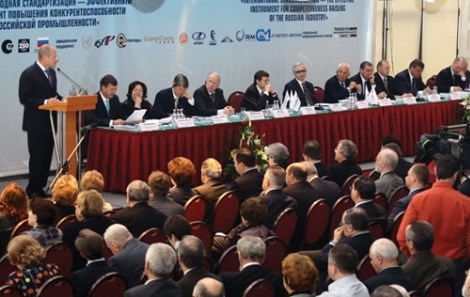Protective Coatings Properties are Topic of Proposed New ASTM Standard
Dry fall coatings are manufactured and sold by a number of coating manufacturers and their inherent dry fall properties are critical in avoiding damage to property adjacent to and below spraying operations, yet there is no known standardized procedure to evaluate whether these coatings possess dry fall properties on surfaces of varying temperature.

Potential users, including coating manufacturers, architects, engineers and facility owners, are encouraged to participate in the development of a proposed new ASTM International standard, ASTM WK34014, Practice for Determining the Dry Fall (Fog) Properties of Protective Coatings.
The proposed new standard is under the jurisdiction of Subcommittee D01.46 on Industrial Protective Coatings, which is part of ASTM International Committee D01 on Paint and Related Coatings, Materials and Applications.
“Dry fall coatings are manufactured and sold by a number of coating manufacturers and their inherent dry fall properties are critical in avoiding damage to property adjacent to and below spraying operations,” says Bill Corbett, professional services business unit manager, KTA-Tator Inc., and a D01 member. “Yet there is no known standardized procedure to evaluate whether these coatings possess dry fall properties on surfaces of varying temperature.”
Corbett notes that the attachment of overspray particles to vehicles and other surfaces not intended to be coated can result in property damage and insurance claims. Dry fall coatings are formulated so that the overspray particles dry as they move through the air and before they land on horizontal surfaces. The particles can then be brushed off or vacuumed from the surfaces with no damage.
“Once it has been approved, this proposed practice will be used to evaluate the dry fall properties of coatings prior to large scale use,” says Corbett. “It will also be used to evaluate whether the coatings possess the same dry fall properties when the fallout collects on surfaces with an elevated temperature.”
To purchase ASTM standards, visit www.astm.org and search by the standard designation number, or contact ASTM Customer Relations (phone: 610-832-9585; service@astm.org). ASTM International welcomes and encourages participation in the development of its standards. For more information on becoming an ASTM member, visit www.astm.org/JOIN.
ASTM International is one of the largest international standards development and delivery systems in the world. ASTM International meets the World Trade Organization (WTO) principles for the development of international standards: coherence, consensus, development dimension, effectiveness, impartiality, openness, relevance and transparency. ASTM standards are accepted and used in research and development, product testing, quality systems and commercial transactions.
Related Content
-
Hexavalent to trivalent chromium — the environmental benefits
Regulatory pressures to switch from hexavalent chromium to trivalent alternatives are a growing concern for many finishing operations. In this Products Finishing Ask the Expert clinic, Brittany McKinney of Pavco discusses the environmental considerations driving these regulations.
-
Novel Wastewater Treatment Targets Micropollutants
Swiss wastewater treatment technology provider Oxyle specializes in advanced wastewater treatment for removal of highly persistent micropollutants such as PFAS.
-
OSHA, DOT and EPA Penalties Increase for 2023
The Department of Labor to revise civil penalty amounts for employer OSHA violations.













.jpg;maxWidth=300;quality=90)

